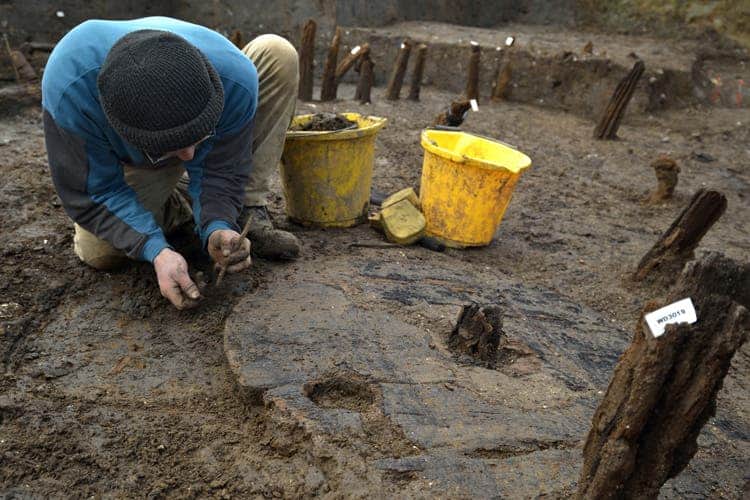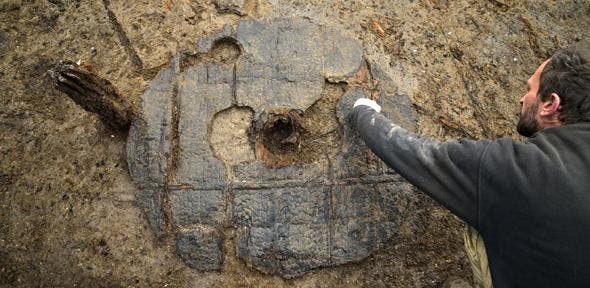Archaeologists have uncovered one of the biggest and best-preserved wheels from the Bronze Age, dating from nearly 3,000 years ago.

The wheel holds a special place in human culture – even though we rarely give wheels a second thought, they basically revolutionized our world, allowing us to redefine transportation. After all, there’s a reason why something so simple is still used to this day. But 3,000 years ago, wheels were the pinnacle of technology, and understanding Bronze Age wheels could enable us to better understand the challenges of achievements of the time.
The discovery was made in a site nicknamed “Britain’s Pompeii,” a Bronze Age site near Peterborough. The site mostly consists of intriguing round wooden houses, built on stilts next to a river. Thought to date from 1100-800 BC, the ancient wooden wheel is one metre in diameter and has been so well preserved by the silt that it still contains its hub. Kasia Gdaniec, Senior Archaeologist for Cambridgeshire County Council, said:
“Among the wealth of other fabulous artefacts and the new structural remains of round houses built over this river channel, this site continues to amaze and astonish us with its insight into prehistoric life, the latest being the discovery of this wooden wheel. Believed to be the most complete example yet found from this period, this wheel poses a challenge to our understanding of both Late Bronze Age technological skill and, together with the eight boats recovered from the same river in 2011, transportation.”

Archaeologists were delighted to find the wheel in such a good condition. Duncan Wilson, Chief Executive of Historic England, believes this is proof of the sophistication of the people living during the time.
“This remarkable but fragile wooden wheel is the earliest complete example ever found in Britain. The existence of this wheel expands our understanding of Late Bronze Age technology and the level of sophistication of the lives of people living on the edge of the Fens 3,000 years ago.”
The invention of the wheel falls into the late Neolithic, and some people consider it to be pivotal for the emergence of the Bronze Age. The earliest well-dated depiction of a wheeled vehicle (here a wagon — four wheels, two axles) is on the Bronocice pot, a c. 3500 – 3350 BCE clay pot excavated in a Funnelbeaker culture settlement in southern Poland, and the earliest wheels were always constructed from massive, singular pieces of wood.
As for the site where the discovery was made, it seems to reveal more and more stunning artefacts from the Bronze Age. As scientists dig more and more, they are bound to make even more discoveries.






